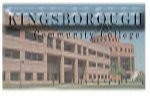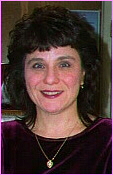
ESL 91 ON THE WEB


|
DR. LORETTA
KASPER'S ESL 91 ON THE WEB |

|
The Mathematical Brain
The ability to grasp the meaning of numbers resides deep in the brain. Humans have an inborn ability to map numbers onto a mental "number line." It seems that when we are asked to choose the larger of two numbers (for example, 6 versus 7 or 1 versus 9), we convert the digits into analogous, or representative, line segments which we can visualize in our minds. Then we compare the length of those segments in order to choose the larger number. Thus, all of us are believed to possess a mental "number line," even if we are unaware of it.
Although simple number processing appears to be our evolutionary heritage, can the same be said for more complex mathematical calculations? Are arithmetic calculations regulated by the same brain structures as simple number processing? The answer to these questions comes from the study of patients suffering brain lesions.
Based on his studies of brain lesions patients, the scientist Stanislas Dehaene has developed a theory of how the brain processes numbers and does simple arithmetic. Dehaene’s patients were suffering from "acalculia," which is a relatively common neurological deficit. Patients with acalculia are unable to perform mathematical calculations, although some other numerical processing may still be available to them.
One of Dehaene’s most famous patients was one known as "the approximate man." This patient was able to tell which of two numbers was bigger, even though he could not read, nor add, nor multiply them. Dehaene’s research with "the approximate man" suggested that the ability to grasp the meaning of numbers through comparison and the ability to calculate precisely were two different processes occurring at least in part in different regions of the brain.
Earlier researchers who had studied patients with acalculia had noted that these patients tended to have other deficits as well. For example, they confused right and left; they couldn’t name the fingers of the hand or find a finger when it was named for them; and they couldn’t write. These patients all had a lesion in the same area of the brain--the inferior parietal cortex of the left hemisphere--on the side of the brain, above and behind the ear.
Unlike other parts of the brain (for example, the visual cortex) which are specialized in their function (sight), the inferior parietal cortex of the brain performs many functions, among them processing numbers. Moreover, although scientists know which part of the brain is responsible for number processing, they do not know how that part of the brain actively processes numbers. Nevertheless, Dehaene believes that certain neurons may be specially wired to code different numerical quantities.
It appears that human beings have an innate ability to grasp the meaning of numbers. There have been experiments which have shown that human babies are born with a mental "number line" that allows them to understand and to process small quantities, up to three or four, and even to perform elementary arithmetic on them.
When the baby eventually goes to school and learns bigger numbers, the mental number line gets extended and refined. The child then learns how to perform more precise calculations than those possible with the number line. At this point other areas of the brain besides the inferior parietal lobe become involved. Calculations, such as multiplication, require left hemisphere involvement, specifically in a multipart structure called the basal ganglia.
No one really knows yet what the mathematical brain looks like. But PET (Positron Emission Tomography) scans of "normal" brains have shown that the inferior parietal cortex is active during most number processing and that the left basal ganglia are especially active during multiplication.
The mathematical brain is a complex structure in which different regions must function in concert. When they do, we are able to perform a wide range of mathematical operations. When they do not, we are severely limited, for the ability to understand numbers is one of the fundamental dimensions along which the brain constructs the world.
Vocabulary
Directions: Using the context of the reading passage, and your own words, write a definition for each of the following vocabulary items.
1. resides
2. convert
3. segments
4. heritage
5. lesions
6. deficit
7. precise
8. in concert
Comprehension Questions
Directions: Use the information presented in the reading passage, and your own words, to write an answer to each of the following questions.
1. What do we mean by "the mathematical brain?"
2. What do we do when we are asked to compare two numbers?
3. How did scientists learn about the mathematical brain?
4. What is acalculia?
5. Dehaene’s most famous patient was known as "the approximate man." How do you think he got this name?
6. What had earlier researchers noted in their studies of patients with acalculia?
7. Which part of the brain seems to be involved in simple number processing?
8. Do scientists know how the brain actually processes numbers?
9. What happens in the brain as we learn to perform more precise mathematical calculations?
10. What do PET scans of normal brains show during mathematical processing and calculation?
Essay Question
Directions: Using the information presented in the reading passage, write a well-organized essay on the following topic:
This reading passage says that the left hemisphere of the brain is involved in mathematical calculations, such as multiplication. The left hemisphere of the brain is commonly known as the language hemisphere.
In what way(s) is mathematics related to language? Draw upon your own experience and your reading to answer this question in a well-organized essay. You may also want to do research in the library or on the Internet to help you prepare your essay.